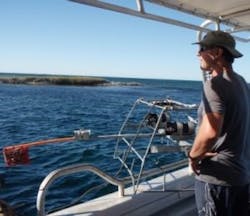Cameras and computers count fish
Researchers at the University of Western Australia (Perth, Australia) led by associate professor Euan Harvey have been awarded a three-year, $450,000 Australian Research Council Linkage grant to develop a vision-based computer algorithm to count and measure fish.
At the moment, Harvey and his colleagues film fish communities by placing a stereo-video system in a frame similar to a craypot, which is dropped on the ocean floor, along with a bag of bait to attract the fish. But using people to count and measure the fish on the resulting video is incredibly time-consuming and expensive.
"At the moment, depending on where we are dropping the cameras and how many species and individual fish there are, it will take between two and three and a half hours to process one video," says Harvey.
Mark Shortis from RMIT University in Melbourne pioneered the use of stereo-video as a tool to monitor and measure fish populations about 18 years ago. Using 28 such stereo video systems, Harvey and his team records up to 2000 hours of fish video a year.
The algorithm Harvey and his team now plan promises to make it easier for marine agencies to monitor fish communities as well as improve husbandry in aquaculture.
Work on developing the vision algorithm is set to begin early this year.
-- By Dave Wilson, Senior Editor, Vision Systems Design
